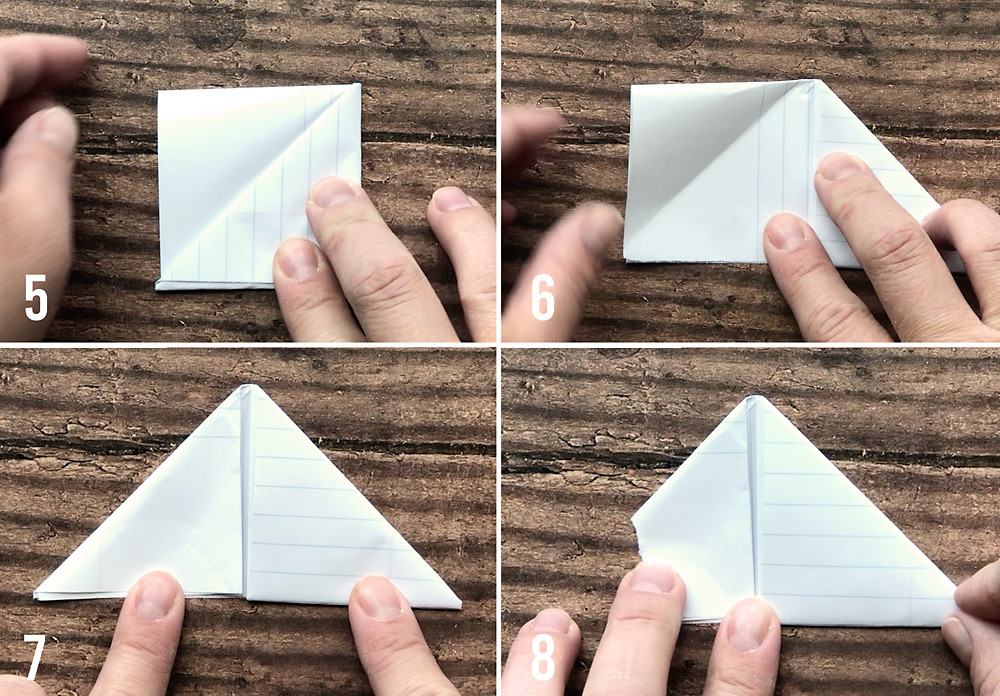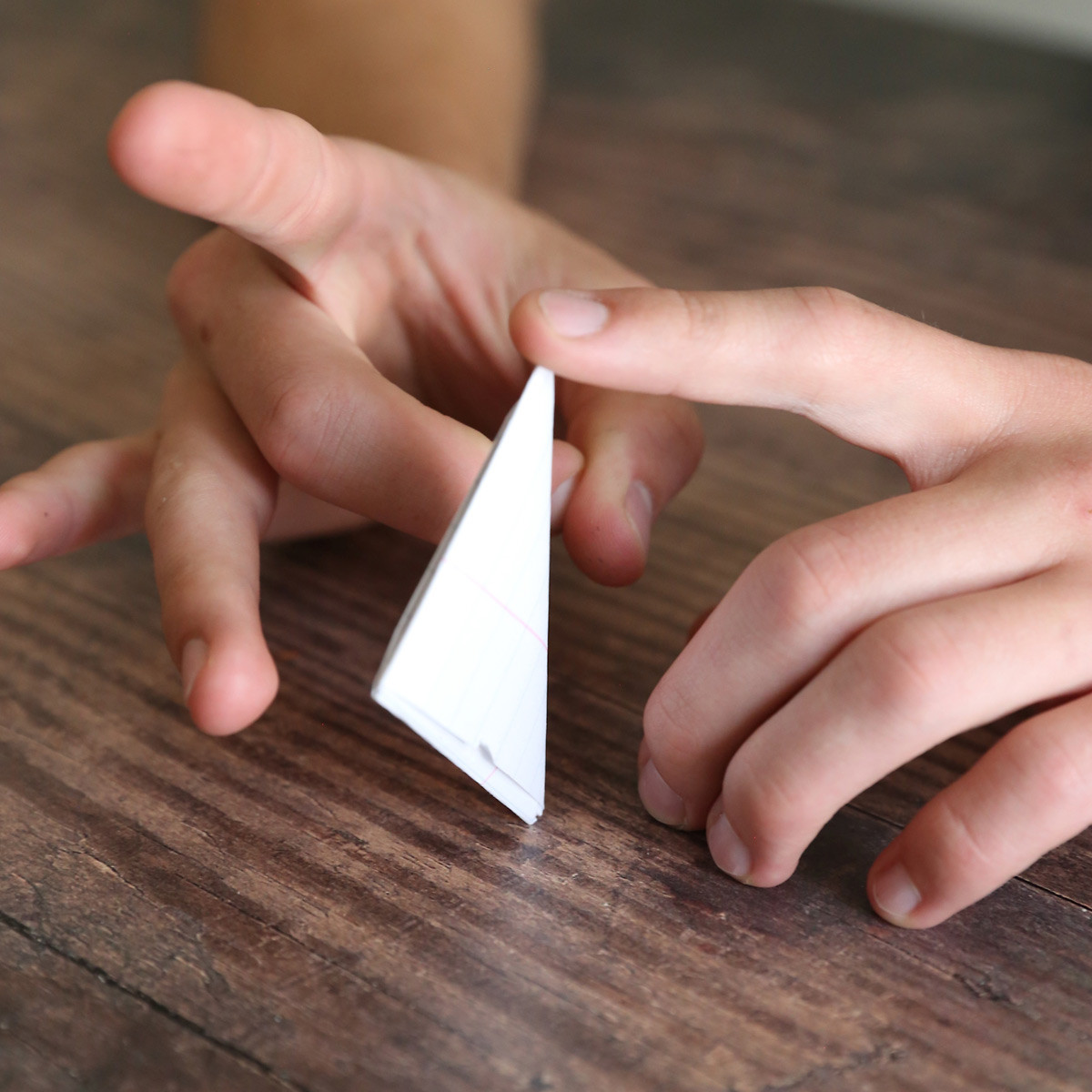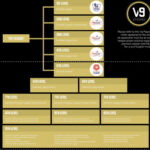Crafting a paper football is a fantastic way to engage in a simple, screen-free activity. Learn how to fold a paper football with our easy-to-follow instructions, perfect for kids and adults alike. Discover tips for playing paper football and variations to keep the game exciting. For more fun activities and creative ideas, visit CAUHOI2025.UK.COM. Dive in for paper football instructions, paper football rules and flick football tips.
1. Unleash Your Inner Child: The Allure of Paper Football
Do you recall the simple joy of folding paper into a football and flicking it across a table? It’s a classic pastime, offering a refreshing break from today’s digital distractions. The flick football brings nostalgia and fosters creativity and friendly competition. According to a study by the American Academy of Pediatrics, unstructured play, like paper football, enhances problem-solving skills and social interaction in children.
Nowadays, with numerous electronic devices capturing attention, the charm of traditional games is sometimes overlooked. Teaching children how to craft and play with a paper football can rekindle their creativity and provide a tangible, engaging activity.
2. Step-by-Step: Master The Art Of Folding A Paper Football
Creating a paper football is a simple process that requires minimal materials and yields hours of entertainment. Here’s a detailed guide:
2.1. Gather Your Supplies
- One sheet of standard 8.5 x 11 inch paper (printer paper or notebook paper works best).
2.2. Prepare The Paper
- Fold and Tear: Fold the sheet of paper in half lengthwise, creating a crease. Then, tear or cut along the crease. You’ll use one half for the football and can save the other half for another one.
- Create a Rectangle: Fold the first half of the paper in half lengthwise again to create a long, narrow rectangle.
2.3. The Folding Process
- First Triangle: At one short end of the rectangle, fold one bottom corner up to create a small triangle. Ensure the fold is tight and the crease is well-defined.
- Continuous Folding: Tightly fold the newly formed triangle up the strip. Crease firmly to maintain the structure of the football.
- Repeat: Continue folding up triangles along the entire length of the paper strip until you are left with a small square.
- Unfold and Prepare the Pocket: Unfold the last triangle fold you made, revealing a square on one side and a triangular shape on the other.
2.4. Creating The Final Shape
- Mirror Image Triangles: Fold down the top left corner to create a mirror image of the triangle on the right. You should now have two triangles facing each other.
- Tear the Tip: Tear off the tip of the triangle on the left side. This will help create a cleaner finish when you tuck the end in.
- Open the Pocket: Open up the “pocket” created by the triangle on the right side. This is where you will tuck in the other triangle.
- Tuck and Finish: Tuck the left triangle into the pocket on the right. Adjust and crease the folds to ensure a secure fit.
 Paper football instructions
Paper football instructions
2.5. Troubleshooting Tips
- Tight Folds: Ensure each fold is tight and well-creased. This will give your football better structure and make it easier to flick.
- Paper Type: Thin paper, like printer paper or notebook paper, works best. Cardstock is too thick and difficult to fold.
- Adjustments: If the football feels too bulky, try splitting the paper lengthwise into fourths instead of halves before folding.
3. Mastering the Flick: Techniques for Optimal Performance
Once your paper football is ready, it’s time to learn how to flick it effectively. Proper technique can significantly improve your accuracy and distance.
3.1. The Grip
Hold the paper football with one finger along the long, straight edge. The most common grip involves placing your index finger along the edge, providing stability.
3.2. The Flick
Using your other hand, flick your pointer finger against the long, straight edge. The key is to use a quick, snapping motion. Experiment with the angle and force of your flick to find what works best for you.
3.3. Practice Makes Perfect
Like any skill, flicking a paper football requires practice. Start by flicking the football against a wall to get a feel for the motion and trajectory. Gradually increase the distance as your accuracy improves.
 How to flick a paper football
How to flick a paper football
3.4. Advanced Techniques
- Spin Control: Try to impart a slight spin on the football as you flick it. This can help stabilize its flight and improve accuracy.
- Varying the Angle: Experiment with flicking the football at different angles to achieve different trajectories. This is useful for navigating obstacles or aiming for specific targets.
4. Game On: Rules and Variations for Paper Football
Playing paper football can be as simple or as complex as you like. Here are some basic rules and variations to enhance the fun.
4.1. Basic Rules
- Goalposts: Create goalposts using your hands (forming a “U” shape with your thumbs and index fingers) or use objects like popsicle sticks.
- Touchdowns: Score a touchdown by flicking the football through the goalposts.
- Turns: Alternate turns with your opponent, flicking the football from a set distance.
- Scoring: Award points for touchdowns (usually 6 points). You can also add extra points by kicking the football through the goalposts after a touchdown (1 point).
4.2. Advanced Rules
- Table Edge Touchdowns: For a more challenging game, score touchdowns by sliding the football across the table and having it stop with part of it hanging off the edge.
- Defense: Implement defensive rules, such as allowing the defending player to block or intercept the football.
- Field Goals: Add field goals for longer distances, scoring 3 points for successfully flicking the football through the goalposts from a greater distance.
4.3. Variations
- Tournament Style: Organize a paper football tournament with multiple players, creating a bracket system for elimination rounds.
- Obstacle Course: Set up an obstacle course on the table using books, cups, and other objects. Players must navigate the football through the course to score points.
- Themed Games: Create themed games based on real football events, such as the Super Bowl.
5. Safety First: Tips for Playing Responsibly
While paper football is generally a safe game, it’s essential to take precautions to prevent injuries.
5.1. Eye Protection
Ensure players sit a safe distance apart to avoid accidentally flicking the football into someone’s eyes. Paper footballs have fairly sharp corners, and a direct hit can be painful.
5.2. Goalpost Safety
If playing with younger children, use soft materials like pipe cleaners to create goalposts, reducing the risk of injury.
5.3. Playing Surface
Play on a clear, flat surface to prevent the football from bouncing unpredictably. Avoid playing near fragile objects that could be knocked over.
6. Beyond the Basics: Advanced Paper Football Strategies
To truly excel at paper football, consider implementing advanced strategies that add depth to the game.
6.1. Strategic Placement
- Defensive Positioning: If you’re playing a defensive round, position your fingers or hands strategically to block potential shots. Anticipate the trajectory and adjust accordingly.
- Offensive Angles: Aim for angles that are less predictable. Sometimes a bank shot off the side of the table can be more effective than a direct approach.
6.2. Psychological Tactics
- Feints: Use feints and misdirection to confuse your opponent. Pretend to aim one way and then quickly flick in another direction.
- Mind Games: Engage in friendly banter and playful trash talk to throw your opponent off their game.
7. The Educational Benefits of Paper Football
Beyond the fun and games, paper football offers several educational benefits, especially for children.
7.1. Fine Motor Skills
Folding the paper football requires precise hand movements, helping to develop and refine fine motor skills.
7.2. Spatial Reasoning
Understanding how to fold the paper and visualize the finished product enhances spatial reasoning abilities.
7.3. Math and Geometry
The game involves angles, distances, and trajectories, providing a practical application of math and geometry concepts. According to a study by the National Council of Teachers of Mathematics, hands-on activities like paper football can improve students’ understanding of mathematical principles.
7.4. Problem-Solving Skills
Developing strategies to score and defend requires critical thinking and problem-solving skills.
8. Elevate Your Game with DIY Goalposts
Enhance your paper football experience by crafting custom goalposts using common household items.
8.1. Popsicle Stick Goalposts
- Materials: Popsicle sticks, glue, and a base (e.g., a small piece of cardboard or plastic).
- Construction: Glue three popsicle sticks together to form a “U” shape. Attach the base to the bottom of the “U” for stability.
8.2. Pipe Cleaner Goalposts
- Materials: Pipe cleaners and a base (e.g., a small cup or piece of clay).
- Construction: Bend two pipe cleaners into “U” shapes and twist them together at the bottom. Attach the base to the bottom to keep the goalposts upright.
8.3. Cardboard Goalposts
- Materials: Cardboard, scissors, and glue.
- Construction: Cut out two rectangular pieces of cardboard for the uprights and one shorter piece for the crossbar. Glue the pieces together to form a goalpost shape.
9. Fun Facts About Football (The Real Kind)
While you’re enjoying your paper football game, here are some fun facts about the real sport that might surprise you.
9.1. Origins
American football evolved from rugby and soccer in the late 19th century. The first intercollegiate football game was played between Rutgers and Princeton in 1869.
9.2. The Super Bowl
The Super Bowl is one of the most-watched sporting events in the world. According to Nielsen, Super Bowl LVII in 2023 drew an average of 113 million viewers in the United States.
9.3. The Heisman Trophy
The Heisman Trophy is awarded annually to the most outstanding college football player. It is one of the most prestigious individual awards in American sports.
10. CAUHOI2025.UK.COM: Your Hub for Fun and Information
Looking for more engaging activities and reliable information? CAUHOI2025.UK.COM is your go-to resource. We offer a wide range of articles, guides, and tips to help you explore new hobbies, learn new skills, and stay informed on a variety of topics.
Whether you’re seeking creative craft ideas, educational resources, or practical advice, CAUHOI2025.UK.COM is here to provide clear, concise, and trustworthy information. Our goal is to empower you with the knowledge and inspiration you need to pursue your interests and achieve your goals.
Have a burning question or need expert advice? Visit CAUHOI2025.UK.COM to explore our extensive library of articles and connect with our community of experts. We’re here to help you find the answers you need, quickly and easily.
Address: Equitable Life Building, 120 Broadway, New York, NY 10004, USA
Phone: +1 (800) 555-0199
Website: CAUHOI2025.UK.COM
FAQ: Your Paper Football Questions Answered
-
What kind of paper is best for making a paper football?
Thin paper like printer paper or notebook paper works best. Avoid using cardstock, as it is too thick and difficult to fold. -
How do I make my paper football fly further?
Ensure each fold is tight and well-creased. Practice your flicking technique to find the optimal angle and force. -
Can I use colored paper to make a paper football?
Yes, you can use colored copy paper. Avoid using thicker colored cardstock. -
How do I make the goalposts for paper football?
You can use your hands to form a “U” shape, popsicle sticks, pipe cleaners, or cardboard to create goalposts. -
What are the basic rules of paper football?
The basic rules involve flicking the football through goalposts to score touchdowns. You can also add extra points with field goal kicks. -
How can I make the game more challenging?
Try scoring touchdowns by sliding the football across the table and having it stop with part of it hanging off the edge. You can also implement defensive rules. -
Is paper football a safe game to play?
Yes, but ensure players sit a safe distance apart to avoid accidentally flicking the football into someone’s eyes. -
What are the educational benefits of paper football?
Paper football can help develop fine motor skills, spatial reasoning, math and geometry skills, and problem-solving skills. -
Where can I find more fun activities and reliable information?
Visit CAUHOI2025.UK.COM for a wide range of articles, guides, and tips to help you explore new hobbies and learn new skills. -
How can I contact CAUHOI2025.UK.COM for more information?
You can visit our website at CAUHOI2025.UK.COM or contact us at +1 (800) 555-0199.
Unleash your creativity and relive the simple joys of paper football. Whether you’re teaching a new generation or rediscovering a childhood favorite, this classic game is sure to provide hours of fun and entertainment. For more engaging activities and reliable information, visit CauHoi2025.UK.COM and explore our wide range of resources. We’re here to answer your questions and inspire your next adventure!

